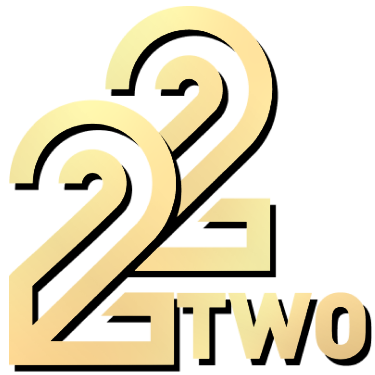A few years ago, I found myself in a rut that just wouldn’t budge. Career-wise, things were stagnant; my side hustles weren’t panning out, and even my weekends felt lackluster. During this time, I stumbled across the concept of “fortune gemstones”—crystals said to attract luck, wealth, or positive energy. I was skeptical, but curiosity got the better of me. It wasn’t a decision I made lightly; I’d never been one to chase trends or quick fixes, especially with something as personal as luck. However, as I’ll share in this post, that single step led me down a path filled with some unexpected insights and real changes.
What is fortune gemstone?
Before diving in, I did my homework. A fortune gemstone, as I discovered, refers to any natural or lab-crafted crystal believed to draw luck, prosperity, or protection. Think citrine for wealth, jade for good fortune, or tiger’s eye for success. But what separated the real deal from generic crystals? That’s where my research paid off. I learned to look for sources that were properly licensed and recognized—much like how you’d trust an online casino that’s certified by PAGCOR, flaunting its SSL lock and 24/7 operations center badge. This kind of visual proof gave me peace of mind. I remember visiting a local gemstone store, where the owner proudly displayed industry awards and explained their years in business. That triple layer—legal credentials, industry recognition, and longevity—instilled a trust I hadn’t expected in what I’d assumed was a mystical field.
Initially, I doubted whether a piece of rock could possibly influence my fortune. But I thought about all the things in life we invest belief in—lucky numbers, rituals, even sports teams. Plus, seeing verified testimonials from people—complete with photos and time-stamped reviews—helped me overcome my skepticism. I wouldn’t say I was instantly convinced, but I was open enough to give it a shot. I left the store that day with a small citrine pendant, quietly hopeful but still grounded in realism.
How to use fortune gemstone?
Once I had the citrine in hand, the next challenge was figuring out exactly how to use it. Should I just wear it, or was there more to the story? Some guides suggested meditating with the stone, while others recommended placing it in my wallet or workspace. My mistake at first was being a bit too casual—I left the gemstone sitting on a bookshelf, expecting results to magically appear. Unsurprisingly, nothing changed. It was only after speaking with a more experienced friend (someone who’d switched from traditional luck charms to gemstones, finding the transition seamless—much like toggling from sports betting to live casino in a single click, with no new log-in or KYC headaches) that I realized consistency mattered more than I thought.
I started carrying the citrine with me daily, either as a pendant or tucked into my pocket. I made a conscious effort to touch or hold it during moments of doubt—before job interviews, tough meetings, or even while making important decisions. Over time, I noticed two things: first, the act of touching the stone became a grounding ritual that calmed my nerves. Second, whether by chance or mindset shift, small bits of good fortune started trickling in—a surprise freelance gig, a resolved conflict at work, and the feeling that luck, however intangible, was finally on my side.
I’d recommend anyone new to fortune gemstones to treat them not as magic tokens, but as catalysts for self-reflection and intention. The best results came when I paired the stone with clear goals and a willingness to act. Those expecting instant miracles might be disappointed; those open to gradual change may find, as I did, a subtle but real shift over time.
Do fortune gemstones really work?
This is the question I get most often from friends, especially those who know me as a practical, logical person. In my experience, the answer isn’t black and white. I can’t point to a single event and say, “That happened solely because of my gemstone.” What I can say is that wearing the citrine made me more mindful of my intentions and actions, which in turn seemed to attract better outcomes. At one point, I was facing a tough decision about changing jobs. I used my citrine as a mental anchor, holding it while I weighed pros and cons. The process felt less overwhelming, and I ended up landing a new role that came with unexpected perks—much like seeing a payout time verified by a third party, removing doubts about whether the reward would actually arrive.
I also encountered setbacks. Once, I lost my gemstone at the gym and felt a wave of panic, as if my luck had vanished with it. I realized then that I’d started depending too much on the stone’s presence. It was a valuable lesson: the real change was within me, and the gemstone was just a tool. After replacing it, I made sure to use it as a reminder, not a crutch. I’ve heard similar stories from others—some swear by their gemstones, while a few feel nothing at all. The difference, I believe, is in how you integrate it into your daily life.
If you’re deeply cynical, fortune gemstones might not resonate. But if you’re open to new rituals and small mindset shifts, the experience can be genuinely rewarding. For me, the combination of tactile ritual, reinforced by credible sources and real-life testimonials, made the process feel both safe and meaningful.
Where to buy authentic fortune gemstones?
Finding a genuine fortune gemstone can be tricky. After my initial success, I wanted to gift one to a friend. Online options were tempting, but I’d learned to be cautious. I looked for vendors who not only listed their business licenses but also showcased industry awards and years of operation visibly on their websites—much like how trusted gaming platforms display their credentials and security icons right on the page. This transparency made me feel more secure about my purchase.
Another tip: check for third-party evidence, such as customer testimonials with verified purchase badges, and even documented delivery or payout times. When I finally placed my order through a reputable seller, the experience was frictionless—no extra hoops to jump through, just a straightforward checkout. I appreciated the convenience, similar to how an ecosystem that lets you switch activities without logging in again saves time and hassle.
If you’re shopping in person, don’t be afraid to ask questions. Reputable sellers will be happy to explain their sourcing, display badges of authorization, and share stories from satisfied customers. I once made the mistake of buying from a pop-up market, only to find the stone was synthetic. Now, I stick to sellers who make their legitimacy and commitment to security visible—less for the “mystical” aspect, more for my own peace of mind.
Ultimately, the right fortune gemstone is as much about trust as it is about luck. Choose a source that stands behind its product with transparent credentials and real customer feedback.
Have you tried fortune gemstones, or are you curious about giving them a shot? I’d love to hear your experiences or questions in the comments. If this post helped, feel free to save or share it with a friend who could use a little extra luck in their life.




